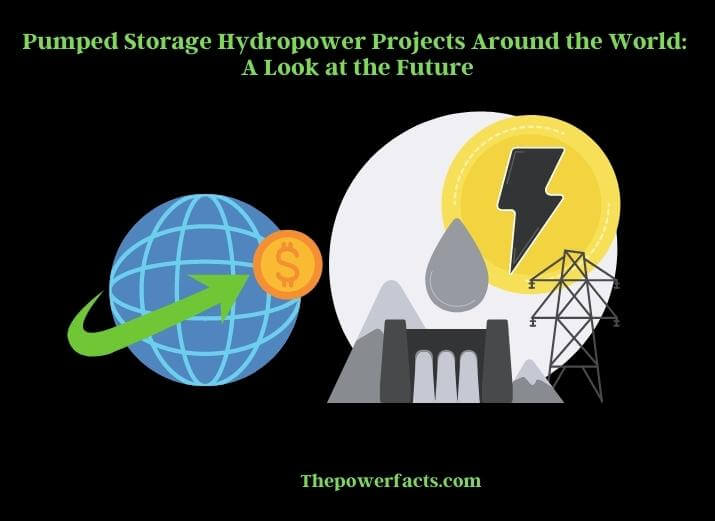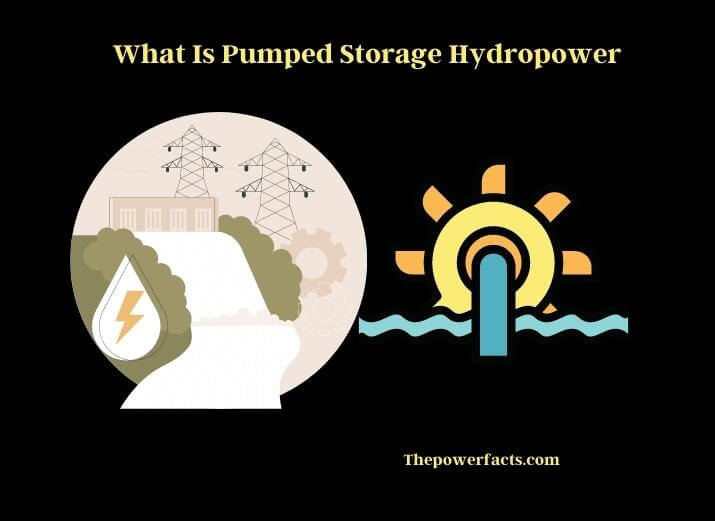As the world continues to grapple with the challenges posed by climate change and the need for sustainable energy solutions, the importance of energy storage technologies has become increasingly clear. One of the most promising solutions is pumped storage hydropower (PSH), a form of energy storage that has been used for over a century. PSH projects store energy by pumping water from a lower reservoir to an upper reservoir, where it can be released back to the lower reservoir through a turbine to generate electricity.

PSH projects are highly flexible and can be rapidly deployed, making them well-suited for supporting the growth of renewable energy sources, such as wind and solar. They can also help to provide grid stability by balancing energy supply and demand, especially during times of peak usage. In fact, PSH is the most widely used form of grid-scale energy storage globally, accounting for more than 94% of all installed energy storage capacity.
PSH projects also face a number of challenges, including regulatory and environmental concerns, as well as the need for continued technological advancements. Nevertheless, PSH remains a promising and versatile solution for energy storage and grid stability, with a bright future ahead. In this article, we will explore the future of PSH projects, as well as the challenges and advancements shaping this important technology.
What Is Pumped Storage Hydropower?
Pumped storage hydropower (PSH) is a form of energy storage technology that has been in use for over a century. PSH projects store energy by pumping water from a lower reservoir to an upper reservoir when there is excess energy available, typically from renewable sources such as wind or solar. This water is then released back to the lower reservoir through a turbine to generate electricity when it is needed, such as during periods of high energy demand.
PSH projects are highly flexible and can be rapidly deployed, making them well-suited for supporting the growth of renewable energy sources. They can also help to provide grid stability by balancing energy supply and demand, especially during times of peak usage. In fact, PSH is the most widely used form of grid-scale energy storage globally, accounting for more than 94% of all installed energy storage capacity.

PSH projects typically involve two reservoirs, one located at a higher elevation than the other. Water is pumped from the lower reservoir to the upper reservoir during times of low energy demand, using excess energy from renewable sources or other sources. When energy demand is high, the water is released back to the lower reservoir through a turbine to generate electricity. This process can be repeated as needed, providing a reliable and efficient energy storage solution.
While PSH has been in use for many years, continued advancements in technology are making it an increasingly attractive option for energy storage and grid stability. With the growth of renewable energy sources and the need for reliable energy storage solutions, PSH projects are poised to play a crucial role in the future of sustainable energy.
The World’s Largest PSH Projects
Bath County Pumped Storage Station, USA
The Bath County Pumped Storage Station in Virginia, USA, is the largest PSH project in the world, with a total capacity of 3,003 MW. It has been in operation since 1985 and is owned and operated by Dominion Energy.
Huizhou Pumped Storage Power Station, China
The Huizhou Pumped Storage Power Station in China has a total capacity of 2,400 MW and was commissioned in 2014. It is located in Guangdong Province and consists of four units, each with a capacity of 600 MW.
Okawachi Pumped Storage Power Station, Japan
The Okawachi Pumped Storage Power Station in Japan has a total capacity of 1,200 MW and was commissioned in 1999. It is located in Shiga Prefecture and consists of four units, each with a capacity of 300 MW.
Dinorwig Power Station, UK
The Dinorwig Power Station in Wales, UK, has a total capacity of 1,728 MW and was commissioned in 1984. It is located in Snowdonia National Park and has the ability to start generating electricity in just 16 seconds.
New PSH Projects on the Horizon
Greenlink Interconnector, Ireland/UK
The Greenlink Interconnector is a planned 500 MW PSH project that will connect the power grids of Ireland and the UK. It will use a subsea cable to connect the two countries and will be located in the Irish Sea. Construction is expected to begin in 2023, with operations beginning in 2026.
Grand Inga, Democratic Republic of Congo
The Grand Inga project in the Democratic Republic of Congo is one of the largest hydropower projects in the world, with a potential capacity of up to 40,000 MW. The project includes several PSH facilities and is expected to provide electricity to much of Africa.
Snowy 2.0, Australia
Snowy 2.0 is a 2,000 MW PSH project located in the Snowy Mountains region of Australia. It is expected to begin operations in 2026 and will provide renewable energy to over 500,000 homes.
Advancements in Pumped Storage Hydropower Technology
Pumped storage hydropower (PSH) technology has been around for over a century, but recent advancements in technology have made it even more efficient and cost-effective. Here are some of the latest developments in PSH technology:
These advancements in PSH technology are helping to make this energy storage solution more efficient, cost-effective, and adaptable to changing grid demands. As PSH continues to play an important role in our transition to a more sustainable energy future, these technological advancements will be crucial in driving its continued growth and success.
Future of Pumped Storage Hydropower Projects
As the world shifts towards a more sustainable energy future, pumped storage hydropower (PSH) projects are expected to play an increasingly important role in energy storage and grid stability.
Integration with renewable energy sources – PSH projects are well-suited to integrate with renewable energy sources, such as wind and solar, by providing reliable energy storage and grid stability. As renewable energy continues to grow in popularity, PSH projects are likely to play an even larger role in supporting these energy sources.
Expansion in developing countries – While PSH projects have traditionally been concentrated in developed countries, there is growing interested in these projects in developing countries as well. PSH can help to improve energy access and reliability in these regions, particularly in areas with limited access to electricity.
Advancements in technology – As mentioned previously, advancements in PSH technology are making these projects more efficient, cost-effective, and adaptable to changing grid demands. Continued technological advancements will be crucial in driving the growth and success of PSH projects in the future.
Regulatory support – Regulatory support for PSH projects varies by region, with some areas having more favorable policies than others. Continued support from governments and regulatory bodies will be important in driving the growth and adoption of PSH projects.
Public awareness and acceptance – As with any large-scale infrastructure project, public awareness and acceptance are crucial for the success of PSH projects. Developers must work with local communities and environmental organizations to address any concerns and ensure that these projects are developed in a responsible and sustainable manner.
Challenges Facing Pumped Storage Hydropower
While pumped storage hydropower (PSH) projects offer many advantages, there are also several challenges that need to be addressed. One of the main challenges is finding suitable locations for PSH projects. PSH projects require specific geological features, such as two reservoirs at different elevations, which can be difficult to find in certain locations.
PSH projects can have a significant impact on the local environment. Changes to water flow and the construction of dams and reservoirs can have a negative impact on aquatic ecosystems and wildlife habitats. Therefore, it is important to carefully consider the environmental impact of PSH projects and to work with local communities and environmental organizations to mitigate any potential negative effects.
Another challenge facing PSH is the high upfront cost of construction. PSH projects require significant investment in infrastructure, such as the construction of dams, reservoirs, and powerhouses. While PSH projects can provide long-term cost savings and energy reliability, the initial investment can be a barrier to entry for some developers.
PSH projects also face challenges in terms of regulation and permitting. The regulatory environment for PSH projects varies by region, with some areas having more favorable policies than others. Developers must navigate the regulatory landscape to secure permits and approvals for their projects, which can be a lengthy and expensive process.
Final Thoughts
Pumped storage hydropower (PSH) projects have a critical role to play in the future of sustainable energy storage and grid stability. As renewable energy sources continue to grow in popularity, PSH projects will be a crucial tool in supporting their development and integration into the grid. However, PSH projects also face a number of challenges, including regulatory and environmental concerns, as well as the need for continued technological advancements.
The future of PSH projects looks promising, as technology continues to advance, and public awareness and acceptance grow. With continued regulatory support and investment, PSH projects have the potential to drive the growth of renewable energy sources and provide reliable energy storage and grid stability for years to come.
As we move towards a more sustainable energy future, PSH projects will be an important part of the solution. By combining technological advancements with regulatory support and public engagement, we can help to ensure that these projects are developed in a responsible and sustainable manner and that they play a crucial role in achieving our energy goals.